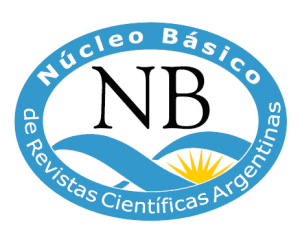Submissions
Submission Preparation Checklist
As part of the submission process, authors are required to check off their submission's compliance with all of the following items, and submissions may be returned to authors that do not adhere to these guidelines.- The submission has not been previously published, nor is it before another journal for consideration (or an explanation has been provided in Comments to the Editor).
- The submission file is in OpenOffice, Microsoft Word, or RTF document file format.
- Where available, URLs for the references have been provided.
- The text is double-spaced; uses a 12-point font; employs italics, rather than underlining (except with URL addresses); and all illustrations, figures, and tables are placed within the text at the appropriate points, rather than at the end.
- The text adheres to the stylistic and bibliographic requirements outlined in the Author Guidelines.
Research articles
These correspond to results from original scientific research, scientifically appropriate that provide new information to the area of knowledge.
Short communications or Notes
Corresponden a informes resultantes de la investigación científica, con el objeto de comunicar resultados de amplitud más restringida que los trabajos de investigación, de hasta 2000 palabras de longitud.
Articles of bibliography revision and/or update
Son revisiones de aspectos puntuales de temas de actualidad o emergentes, relevantes a la disciplina. No tienen por objeto configurar una recopilación bibliográfica, sino que presentarán temas en los que existe diversidad de opiniones, sobre los cuales el autor proveerá una opinión objetiva, brindando para ello detalles de los hallazgos científicos, así como opiniones de diversas fuentes. Es requisito de la revista que el autor sea un investigador formado, con amplia experiencia y antecedentes en la temática a desarrollar en el artículo. La publicación de este tipo de trabajos se procesará por invitación del Comité Editorial. No obstante, si un autor desea publicar en esta categoría, deberá proveer al Editor en Jefe su sugerencia respecto del título y estructura propuesta del trabajo para que sea considerada.
Technical Note
Se trata de la descripción concisa de una técnica, desarrollo, procedimiento o dispositivo original e innovador, basado en la investigación, que tiende a brindar una solución a un problema relevante para la práctica profesional. Deberá enfatizar las ventajas comparativas que la nueva técnica aporta a la disciplina profesional en la cual se desarrolla. El manuscrito no deberá superar las 2000 palabras y se organizará con secciones de introducción, metodología, resultados y conclusión, no incluyendo al efecto más de diez referencias bibliográficas, ni más de cuatro tablas y/o figuras.
Copyright Notice
Once accepted, the articles become the intellectual property of InVet and their future publication, either partial or complete, will only be possible with written permission from the Editor. InVet guarantees authors the use of their published material in books where they intervene as authors or editors, with the sole obligation of mentioning in the book the source of the original publication.
Privacy Statement
The names and email addresses entered in this journal site will be used exclusively for the stated purposes of this journal and will not be made available for any other purpose or to any other party.












